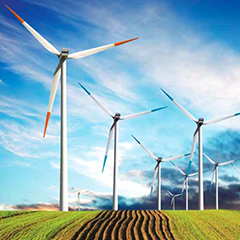Are America’s key communities really ready to embrace wind to the extent that the industry would like? Perhaps not, claims the Center for Rural Affairs, citing a number of possible obstacles. But – and this is a big but – there are ways forward, and ways to address the major community and landowner concerns. We examine the options.
The USA’s most abundant wind resources reside in the remote regions of the Upper Midwest and Great Plains. Residents of these areas routinely enjoy the benefits of wind production in the form of lease payments, jobs, economic development, and tax revenue. But these same lightly populated communities demand only a small amount of electricity, making it imperative that a new generation of transmission infrastructure be put in place to move this energy from where it’s produced to where it’s needed most.
Historically transmission lines were built primarily to serve population. Because the Upper Midwest and Great Plains feature low population densities, large amounts of transmission infrastructure was not needed. But today that’s changed. In 2012 the United States installed more than 13 gigawatts of new wind projects, qualifying this technology as the largest source of new electricity generation capacity nationwide (Woody, 2013). At the same time, investments in transmission infrastructure continue to lag, remaining the single biggest impediment to further industry growth.
Despite its importance to a thriving wind industry, and in turn thriving rural communities, local citizens often oppose newly announced transmission projects. Every community and landowner holds a set of concerns, primarily focused on the practices of transmission developers, but threads can be identified. Identification of these commonalities can help utilities, community members, and advocates all more efficiently navigate the difficult process of siting and approving proposed lines, resulting in projects that meet the needs of all involved.
Transmission project stakeholders-including landowners and local communities-do not tend to fall into convenient categories of support or opposition to proposed lines. More often than not, they initially remain neutral or sceptical, but do not directly support or oppose a project. Instead, they offer up differing concerns about the project and await answers before taking a position. Identifying and categorizing these concerns can help stakeholders better understand which issues deserve increased focus and which elements will be most controversial. In this section, identified themes will be highlighted and explained, providing some insight into the various concerns that can fit within each rubric.



























